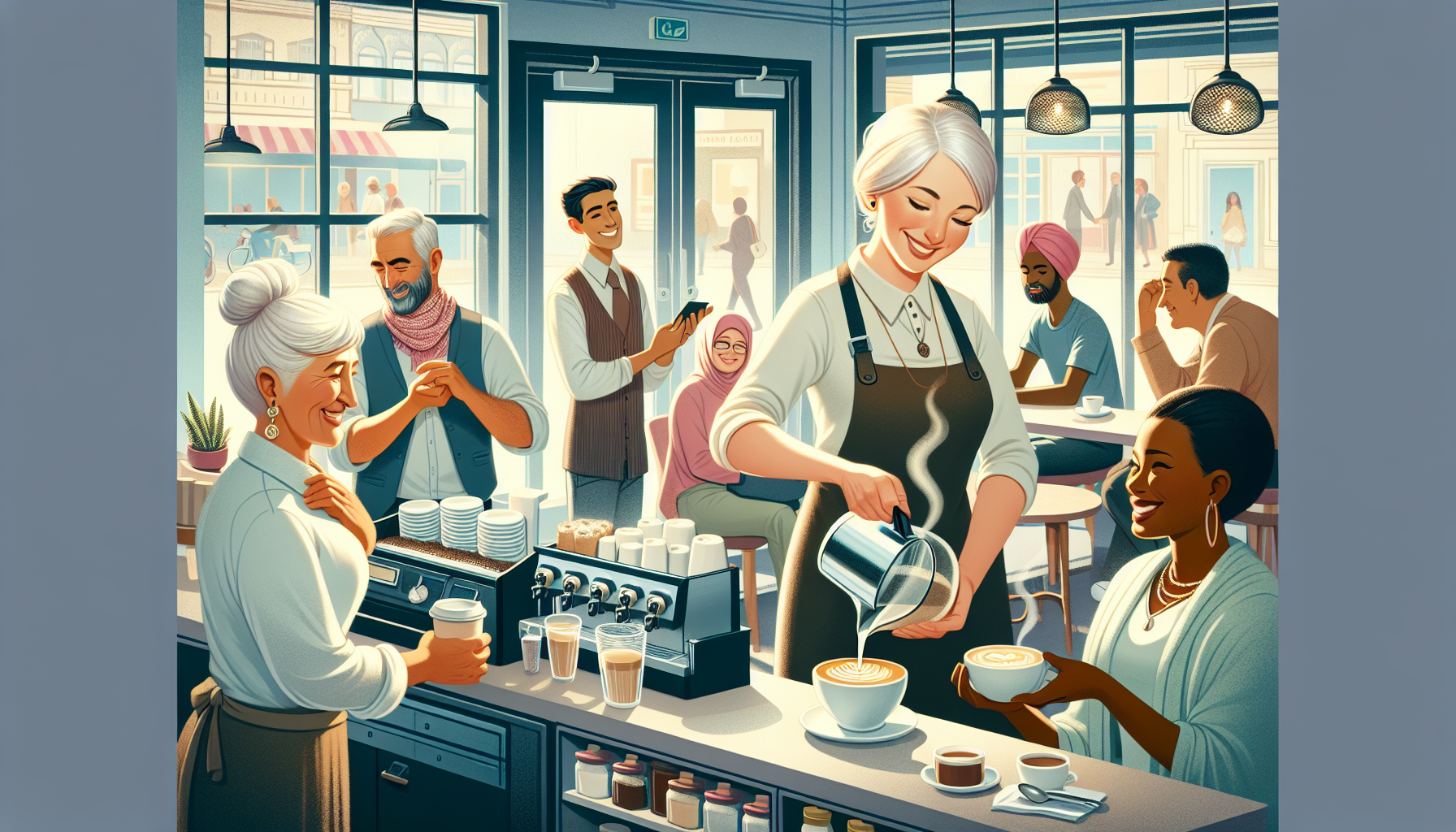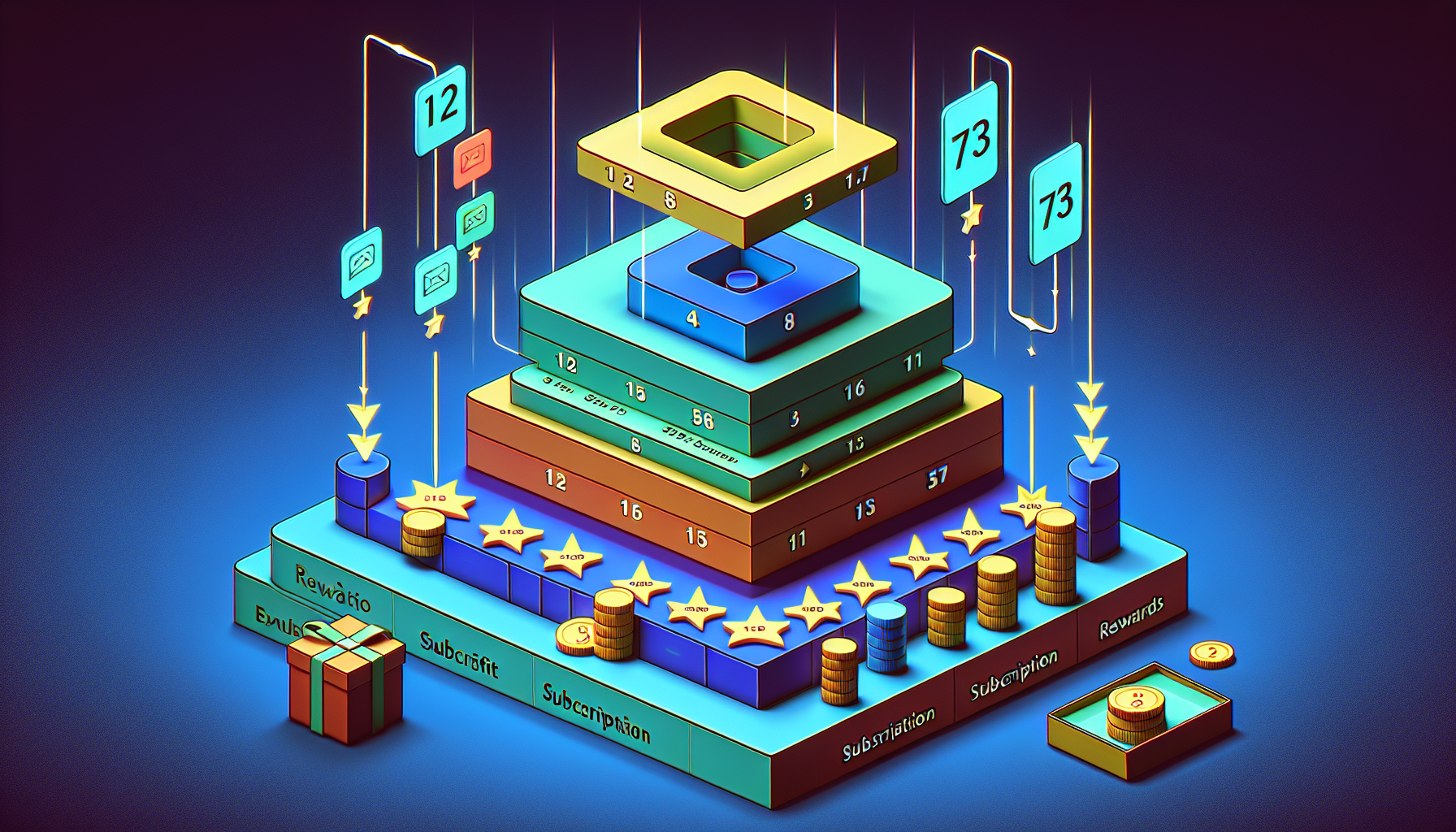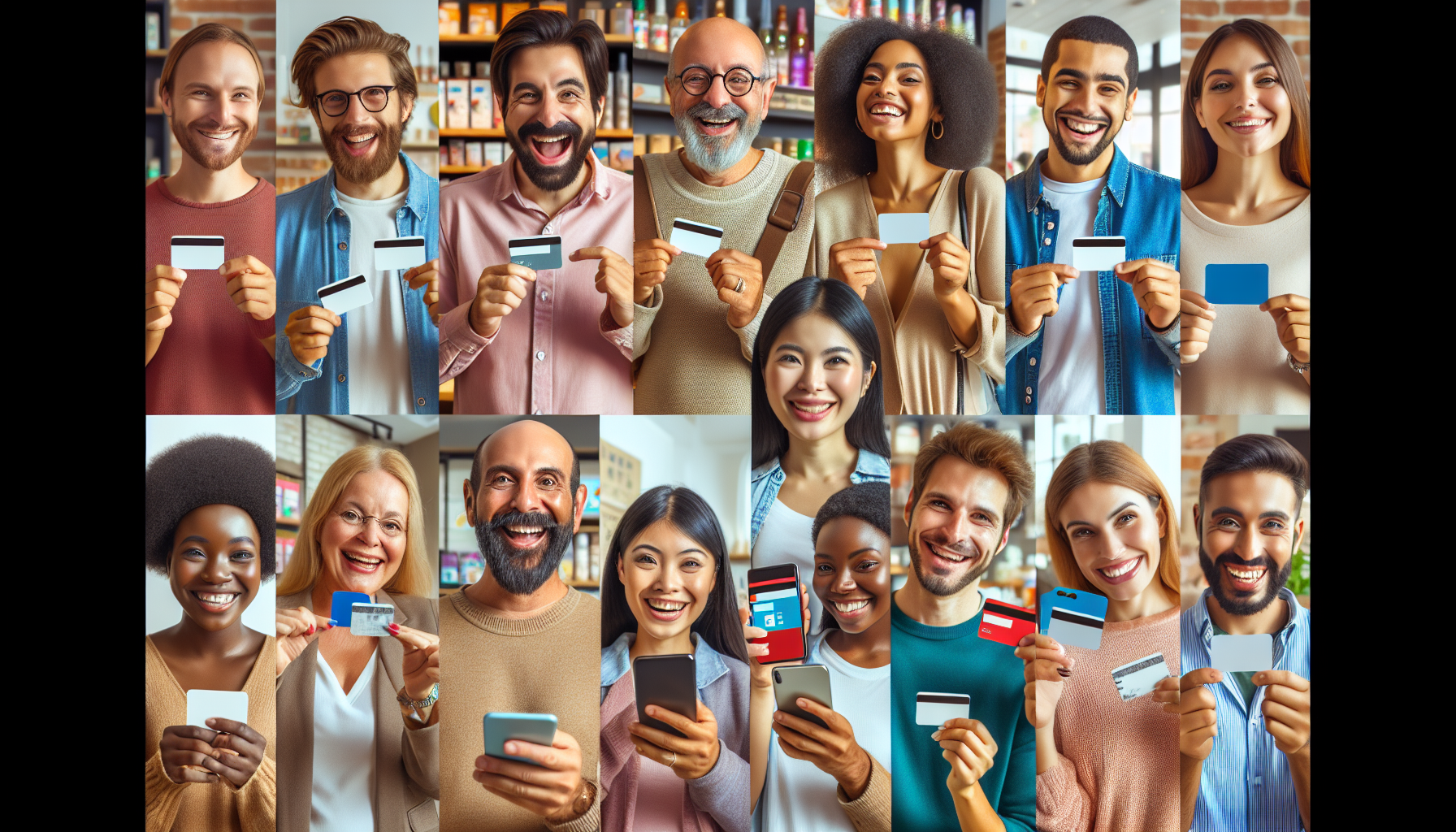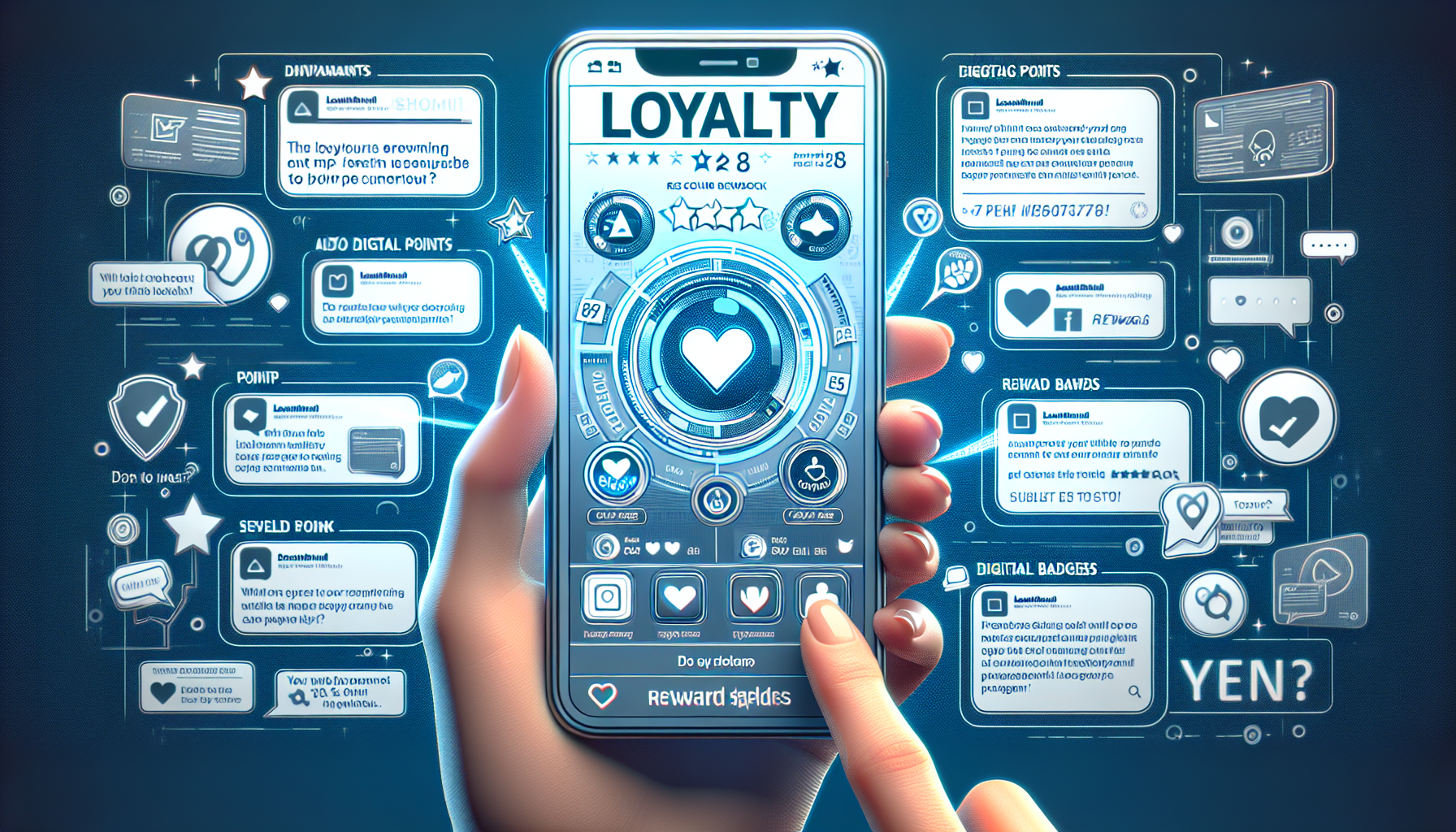Loyalty Program Ideas for Small Business: Enhancing Customer Engagement and Retention
Creating loyalty programs is like weaving a tighter community around your small business. These programs reward customers for their repeat business, making them feel valued and appreciated. It's not just about offering discounts or rewards; it's about fostering a relationship where customers are excited to return. With various tools like POS systems and loyalty program software, businesses can build structures that not only retain customers but also encourage new ones through referrals and shared promotions.
Key Takeaways for Small Business Owners
- Boosting Customer Retention: Loyalty programs are essential for enhancing customer retention, which is often more cost-effective than acquiring new customers. By rewarding repeat customers, small businesses can build a loyal community that supports sustained revenue growth.
- Personalized Customer Experiences: Implementing loyalty programs that offer personalized rewards and experiences, such as birthday discounts or rewards for special milestones, significantly enhances customer satisfaction and loyalty. These tailored experiences make customers feel valued and more likely to return.
- Innovative Loyalty Strategies: Utilizing creative loyalty strategies like tiered programs, subscription services, and gamification introduces a dynamic element to the customer experience. These strategies encourage continuous engagement and can differentiate a small business from its competitors.
- Technology Integration: Leveraging digital tools and technologies, such as loyalty program software and digital platforms, helps streamline the management of loyalty programs and enhances the ability to track customer behavior and preferences, leading to more effective and personalized marketing efforts.
Imagine your customers earning points for every purchase or getting exclusive access to sales. This encourages them to keep coming back, turning occasional visitors into regulars. By understanding customer preferences and rewarding them accordingly, customer service becomes more than just a transaction. It becomes a personalized experience that customers cherish, driving both customer engagement and acquisition.
Unveiling the Power of Loyalty Programs for Small Businesses

For small businesses, creating a loyalty program can be a game-changer. It's not just an added value for your customers; it's a strategic tool for growth. Customer loyalty programs are designed to enhance customer retention, a crucial factor considering that acquiring new customers can be more expensive than keeping existing ones. By focusing on rewarding repeat customers, you can build a loyal community around your brand, ensuring steady revenue and fostering a positive brand image.
The Essential Role of Customer Retention and Lifetime Value
Understanding the importance of repeat customers is crucial for small businesses. While acquiring new customers is vital, nurturing and retaining existing ones offers greater long-term value. These loyal customers tend to spend more over time, proving that the lifetime value of a customer far outweighs the initial cost of acquisition. Focusing on customer retention strategies can significantly boost your profitability and sustain your business in the competitive market.
Calculating Customer Retention Rate: A Key to Loyalty Success
Building customer loyalty is essential, and it starts with understanding your customer retention rate. This metric, along with customer lifetime value and churn rate, provides insight into how successfully your business maintains customer interest. By analyzing these numbers, you can tailor your loyalty programs to better meet the needs of your audience, ensuring that they remain engaged and continue to choose your business over competitors.
Innovative Customer Loyalty Program Ideas to Boost Your Small Business

To stand out, encourage customers with unique loyalty program ideas. From discount codes for their next purchase to creating a small business loyalty program that feels personal and rewarding, the possibilities are endless. Tailoring your approach to fit your business and your customers' needs can turn first-time visitors into lifelong fans. Best of all, you can implement most (if not all) of these strategies quickly and easily using the Lealtad App.
1. First-Time Purchase Discounts: Acquire New Customers with Discount Coupons
Offering a one-time discount on a customer's first purchase is an effective way to welcome new faces to your small business. This initial gesture of goodwill can set the tone for the customer relationship, encouraging them to return in the future.
Example: A Local Bakery Offering 10% Off on First Visit
A local bakery can charm new customers by giving them a 10% discount on their first visit. This first-time purchase deal not only introduces them to delicious offerings but also starts building brand loyalty from the very first transaction.
2. Reward Points System: Encouraging Repeat Purchases
Implementing a reward points system is a fantastic way to encourage repeat customers. Each purchase earns points, which can be redeemed for rewards, turning every visit into an opportunity to earn towards something special. This is one of many loyalty program ideas to boost engagement and keep customers excited about returning.
Example: A Coffee Shop with a Point-Based Free Drink Reward Program
A coffee shop can implement punch cards or a digital rewards system where regular customers earn points with each purchase. Once they accumulate enough points, they can redeem them for a free drink. This not only encourages brand loyalty but also makes the target market feel appreciated.
3. Birthday and Anniversary Rewards: Personalizing Customer Experience
Creating personalized experiences, like offering rewards when a customer makes a purchase on their birthday or anniversary, is a powerful marketing tactic. This approach helps build customer loyalty by making customers feel special and valued, encouraging them to keep coming back. Structuring your loyalty programs around these personalized milestones can significantly enhance customer satisfaction.
Example: A Boutique Offering Exclusive Discounts on Special Days
A boutique can offer exclusive discounts to customers on their birthdays or anniversaries. By making customers feel special on their significant days, the boutique not only strengthens its relationship with them but also boosts sales through these personalized offers.
4. Customer Referrals Bonus: Expanding Your Customer Base

Launching a referral program that offers existing customers a discount when they bring in new customers is an effective way to expand your customer base. This approach encourages your loyal customers to become brand ambassadors, sharing their positive experiences with friends and family. By using loyalty program software, you can easily track and reward these efforts, further incentivizing word-of-mouth promotion.
Example: A Fitness Center Offering Free Group Class Rewards in Exchange for Referrals
A fitness center can reward customers with a free group class reward for every successful referral. This not only helps support new customer acquisition, but also rewards existing ones, creating a community of members who feel valued and are motivated to share their positive experiences.
5. Tiered Loyalty Programs: Creating Levels of Rewards
Introducing a tiered loyalty program where customers earn points to reach different levels of rewards can create a sense of achievement and exclusivity. This system encourages customers to increase their engagement and spending to unlock new benefits, fostering a deeper loyalty to your brand.
Example: A Retail Store with Bronze, Silver, and Gold Membership Benefits
A retail store can offer a tiered loyalty program with Bronze, Silver, and Gold membership levels. Each level could provide increasing benefits, such as a 10% discount on all purchases for Gold members, encouraging customers to aspire to the highest tier for the best rewards.
6. Subscription Programs: Ensuring Ongoing Engagement
Creating a subscription program can keep your customers coming back regularly. By offering exclusive deals or products monthly, you give them something to look forward to. This not only ensures ongoing engagement but also builds a routine of purchasing from your small business.
Example: A Monthly Gourmet Food Delivery Service
Imagine you sign up for a gourmet food delivery service that promises a box of unique, high-quality ingredients every month. With this subscription, you get a 10% discount on your first-time purchase. This approach not only welcomes you warmly but also keeps you excited for new culinary adventures each month, ensuring you remain engaged and loyal.
7. VIP Experiences and Memberships: Offering Premium Perks and Exclusive Benefits
Offering VIP experiences and memberships can significantly boost customer satisfaction. By providing exclusive discounts and experiences, you make your customers feel special and valued. This tactic helps in retaining your current customers and also plays a crucial role in acquiring new customers through positive word-of-mouth.
Example: An Event Planning Business Providing Early Access to VIP Clients
Consider an event planning business that grants early access to VIP clients for high-demand events. This exclusive perk not only makes VIP clients feel appreciated but also helps in attracting potential customers eager for the VIP treatment. Such exclusive experiences enhance the overall customer relationship with your brand.
8. Gamification Strategies: Making Engagement Fun
Integrating gamification strategies into your loyalty program can make interacting with your brand more enjoyable. By creating a system where customers earn points or rewards for engaging with your business, you effectively boost engagement and encourage more frequent interactions.
Example: A Mobile App with Rewards for Achievement Milestones
A mobile app that rewards users for reaching certain milestones with your business can significantly enhance engagement. Whether it's completing a series of purchases or sharing your brand with friends, rewarding these actions makes customers more likely to continue engaging, turning routine transactions into a fun and rewarding experience.
9. Charitable Donations: Aligning Values with Purchases
Incorporating charitable contributions into your loyalty program can resonate deeply with customers, especially when the causes align with their values. This approach not only supports worthy causes but also strengthens the emotional connection customers have with your brand, encouraging repeat business.
Example: A Bookstore Donating a Percentage of Sales to Literacy Programs
A bookstore that donates a portion of every sale to literacy programs offers a compelling reason for customers to choose them over competitors. This strategy not only boosts sales but also contributes to building a loyal customer base that values social responsibility, showcasing how charitable contributions can become powerful customer loyalty program ideas.
10. Punch Cards and Digital Loyalty Apps: Simplifying Reward Tracking
Utilizing punch cards and digital loyalty apps simplifies the process of tracking rewards for your customers. These tools make it easier for customers to see their progress towards earning rewards, which in turn, encourages continued patronage and helps in retaining customers.
Example: Digital Gift Cards for Every Tenth Service Free
A salon offering a digital card that grants a free service after every ten paid services can effectively overcome marketing challenges. This straightforward incentive not only attracts potential customers but also encourages existing customers to return, blending simplicity with the powerful motivation of earning rewards.
The Backbone of Successful Loyalty Programs

At the heart of every successful loyalty program lies a deep understanding of customer needs and a commitment to fulfilling them. By ensuring your loyalty program aligns with your customers' preferences and consistently delivering on your brand's promise, you create a strong foundation for customer loyalty.
Understanding Your Customers’ Needs and Preferences
Knowing what your customers value most allows you to tailor your loyalty program to meet those needs. Whether it's convenience, savings, exclusive access, or recognition, understanding and addressing these preferences can make your loyalty program more effective and engaging for your customers.
Keeping the Brand Promise Alive Through Consistent Communication
Consistent communication is key to keeping your brand promise alive. Regular updates, reminders, and personalized messages help maintain a strong connection with your customers, ensuring they remain engaged and aware of what your loyalty program offers.
Rewarding Customers Instantly and Frequently
Offering rewards instantly and frequently can significantly enhance the appeal of your loyalty program. When loyalty program members see immediate benefits from their participation, it reinforces their decision to engage with your brand, encouraging continued loyalty and support.
Emphasizing Regular Engagement and Feedback Collection
Gathering feedback regularly and encouraging ongoing engagement are crucial for the success of your loyalty program. By listening to your customers and adapting your program based on their input, you can ensure that your loyalty program remains relevant and valuable to your audience, fostering a strong, loyal customer base.
Technologies That Power Modern Loyalty Programs

Today, innovative technologies are at the forefront of shaping customer experiences and loyalty programs. By harnessing digital platforms, businesses can offer exclusive perks and rewards, greatly enhancing the connection with their customers. Integrating these technologies allows for a seamless and personalized engagement that keeps patrons coming back for more.
Leveraging Digital Platforms for Enhanced Customer Experience
Digital platforms have revolutionized the way small businesses engage with their customers. Through these platforms, offering rewards and incentives has become more streamlined and accessible. Businesses can now easily track customer behavior, tailor exclusive perks, and communicate directly, ensuring a highly personalized and rewarding customer journey.
The Role of Social Media in Promoting Loyalty Programs
Social media plays a crucial role in promoting loyalty programs to a wider audience. It provides a dynamic space for businesses to share updates about their loyalty programs, showcase rewards, and engage directly with their customers. This interactive platform fosters a community around your brand, amplifying your reach and engagement.
Subscription Management Software for Ongoing Engagement
Subscription management software is key to maintaining ongoing engagement with your customers. It simplifies managing memberships, tracking rewards, and customizing offers, making it easier for businesses to keep their customers interested and invested in the loyalty program over the long term.
Measuring the Impact of Your Loyalty Program

Measuring the success of your loyalty program is essential to understand its impact on your business. By analyzing key performance indicators, you can gauge customer engagement levels, retention rates, and overall satisfaction, enabling you to make data-driven decisions to enhance your program's effectiveness.
Key Performance Indicators for Loyalty Programs
Key performance indicators (KPIs) for loyalty programs include customer retention rates, engagement metrics, and redemption rates of rewards. Tracking these KPIs provides valuable insights into how well your loyalty program is performing and highlights areas for improvement to ensure its long-term success.
Strategies for Continuous Improvement Based on Customer Feedback
Gathering and acting on customer feedback is crucial for the continuous improvement of your loyalty program. It allows you to align your program more closely with customer needs and preferences, enhancing retention and engagement. Regular updates based on feedback also demonstrate your commitment to customer satisfaction.
Staying Ahead of Trends in Customer Loyalty Strategies
Staying informed about the latest trends in customer loyalty strategies enables you to innovate and keep your program appealing. Incorporating new ideas and technologies based on these trends can set your program apart, making it more attractive to both existing and potential customers.
Building Trust Through Transparent Reward Policies
Transparent reward policies are foundational to building trust with your customers. Clear communication about how to earn and redeem rewards ensures customers feel valued and respected, fostering a positive relationship and enhancing their loyalty to your brand.
Frequently Asked Questions

Small businesses often have questions about starting and running a successful loyalty program. Addressing these queries can help demystify the process and highlight the benefits of implementing a loyalty strategy to enhance customer engagement and retention.
How Can Small Businesses Start a Loyalty Program?
Small businesses can start a loyalty program by first understanding their customer data and preferences. Creating a loyalty program that offers value through exclusive deals or word-of-mouth marketing can significantly impact customer retention. Business owners should focus on simple, effective programs that encourage repeat visits and customer engagement.
What Are the Costs Associated with Running a Loyalty Program?
The costs associated with running a loyalty program can vary, but they often include expenses related to technology, marketing, and rewarding customers with points or other incentives. However, the return on investment, in terms of customer loyalty and increased sales, can far outweigh these costs.
Final Thoughts: Cultivating Loyal Customers for Long-Term Success

In today's competitive market, exceptional customer service and strategies to attract new customers are vital. A well-designed loyalty program can offer valuable insights into customer preferences, reward loyal customers, and strengthen the relationship with your customers, ensuring long-term business growth and success.
The Enduring Value of a Well-Designed Loyalty Program
A well-designed loyalty program is a powerful tool for business growth, enabling you to engage with customers effectively, offer digital gift cards, and improve conversion rates. If you're a small business owner looking to launch a custom-branded digital loyalty program quickly and affordably, visit the Lealtad App to sign up for your account. You can build and launch your effective customer loyalty program in less than 10 minutes, ensuring repeat visits and a thriving business.
